There's nothing more frustrating than seeing brown spots in your yard, especially during the middle of summer when the grass should be healthy. And chances are, if you have patchy dead grass, you don't know what's causing it. That's why we've looked into this problem. Hopefully, we can help provide the answers you need.
Grass that is dying in patches could be caused by many factors, including:
- Dog urine
- Drought
- Dying weeds
- Equipment and foot traffic
- Fungus
- Grubs
- Thatch
Identifying the source of the problem is the first step toward fixing it. In this article, we'll discuss each of the above problems in more detail. Then, we'll explain how to treat those brown patches in your yard so that you can have a lawn that is 100% green and healthy! Continue reading to learn more.
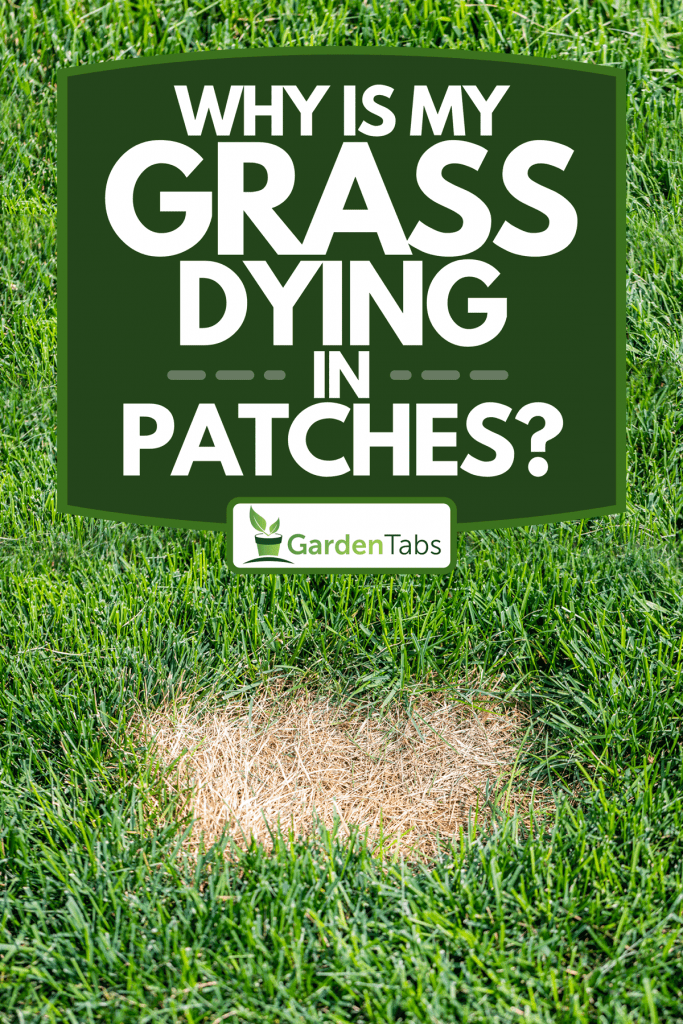
Contents
What's Causing Brown Patches On My Lawn?
Below are the most common causes of brown patches in your yard. Some of them may be easier to identify than others, but even if you aren't sure what's causing the problem, hopefully these suggestions can give you a good place to start.
Dog Urine
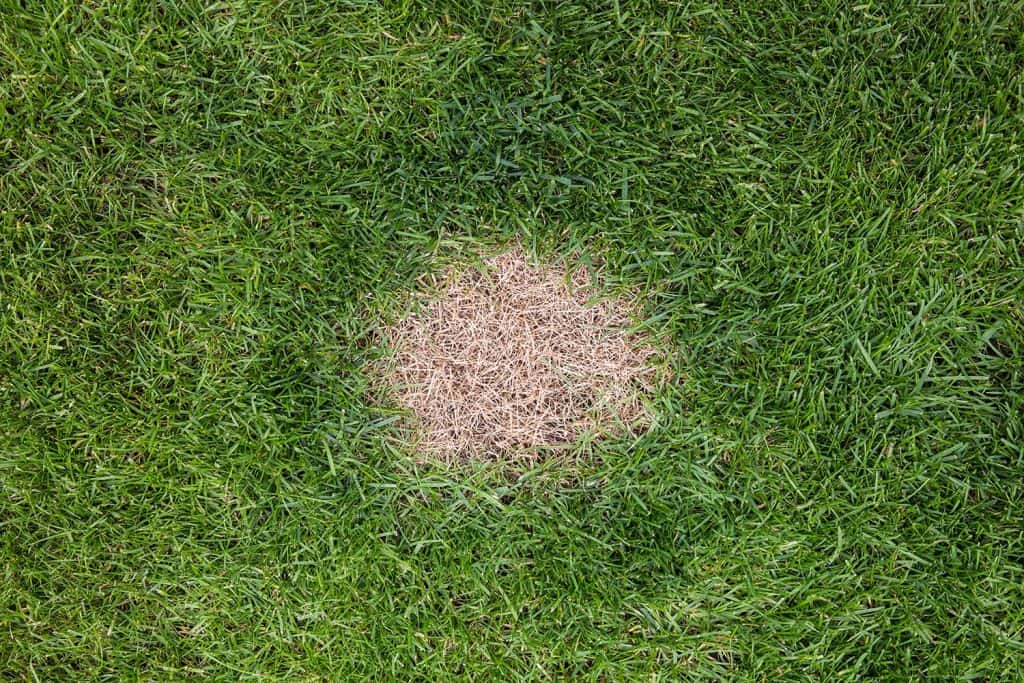
We all love our furry friends, but they could actually be the source of your lawn problems. If you have a dog, this would be the first place to start when trying to identify the issue, especially if your dog likes to relieve him or herself in the same spot every time.
The reason that grass turns brown as a result of dog urine is that urine contains a high amount of nitrogen. Nitrogen in high amounts can actually burn the grass and cause it to lose some of its color. If you suspect this is the problem, look for patches of grass that are brown in the center, but are still dark green around the edges.
Drought
Another problem that could be causing your grass to die in patches is drought. During periods of drought, sections of grass that receive more direct sunlight are likely to turn brown due to excess water loss.
Meanwhile, patches of grass that are closer to rain gutters or water runoff areas will be more likely to stay green for longer due to having more water stored underground. If you haven't been watering your grass regularly, especially when it hasn't rained in a while, this could very well be your problem.
Dying Weeds
If your lawn is susceptible to weeds like crabgrass or dandelions that are left untreated, you could be left with brown patches in your lawn when these weeds die back after their growing season has ended. Weeds can often overtake grass, but they have a shorter growing season.
If too many weeds overtake one section of grass at once, that section could be left bare and brown when all of the weeds die at the same time. Staying on top of weed control can actually prevent this from happening altogether, but it's still an easy fix even if it has already happened.
Equipment And Foot Traffic
Tools, toys, and other equipment that are left sitting in your yard for too long can also cause patchy grass. For example, if you have an inflatable swimming pool set up over the summer, the lawn underneath it will be dead and bare after taking the pool down.
Even leaving a lawnmower or hose pipe sitting in one place for too long can kill the grass underneath it because the grass can't access sunlight and other nutrients that it needs. You may also experience this problem in heavy traffic areas because constant walking on the grass can interfere with its growth.
Fungus
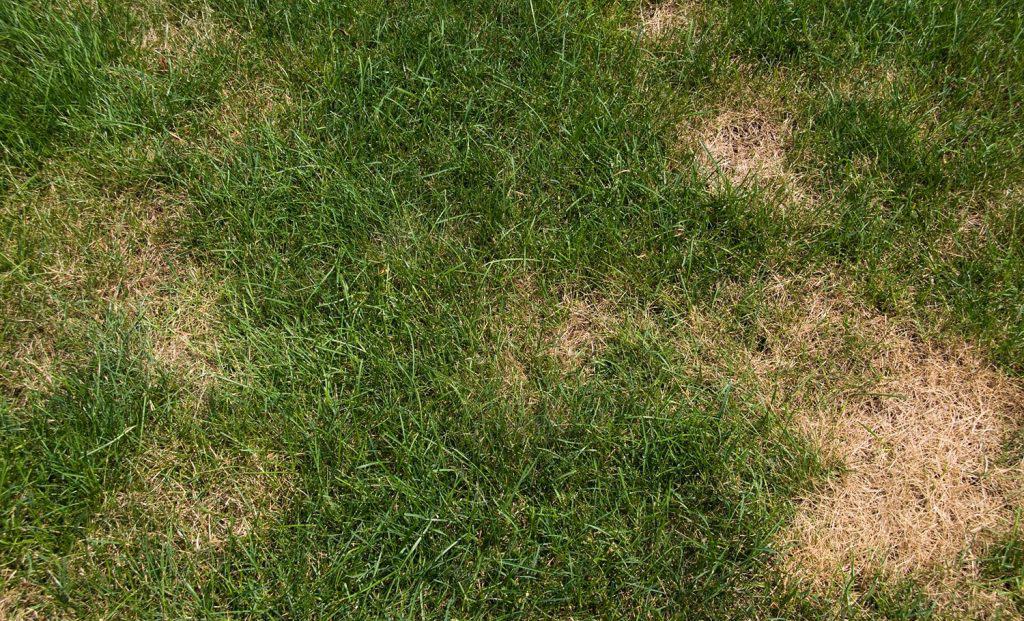
If the brown patches in your yard seem irregular and you've ruled out the other problems listed so far, a fungus known as brown patch is likely the culprit. This fungus can be caused by periods of rain, increased humidity, or poor air circulation. Sometimes, patches of grass that have been long affected by fungus will be green in the middle and dead around the outside.
Grubs
Grubs are pests that live underground and kill the grass by eating the roots. Obviously, this can cause the grass to die, but when this happens, the patch of grass is usually pretty uniform in size. Patches damaged by grubs may also feel spongy and the dead grass will come up easily when raked.
Thatch
The last potential cause of grass that is dead or dying in patches is thatch. This is when dead plant matter builds up between the grass and root system and prevents water from getting to the roots.
Thatch is mostly caused by not mowing or watering your lawn regularly. If the thatch builds up too high, the grass can actually start to grow roots in the thatch. But the thatch layer won't hold water, so the grass begins to dry out and die.
How Do I Treat Brown Patches In My Lawn?
Now that you've identified the problem, you can start treating it. But when trying to establish new grass, it's best to wait until fall to try to treat the patches. This is because the ground will be cool and damp, but still warm enough for new grass seed to establish roots and start to grow as spring rolls around.
Remove Dead Grass
The first step to treating brown patches is to clear out any dead grass or thatch material by raking the brown patches. This is important because the grass seed will germinate best if it touches the ground directly. If thatch is the problem, you can use a thatch rake that will remove it more effectively.
Click here to see this thatch rake on Amazon.
You may also like: Should You Dethatch Or Aerate A Lawn First?
Loosen The Soil
The next step is to use a rake or cultivator to loosen the top 2 to 3 inches of soil. Grass will grow best in soil that is loose and not compacted. You can also add a little compost to the soil to help the grass grow better and healthier.
Click here to see this cultivator on Amazon.
Scatter Grass Seed
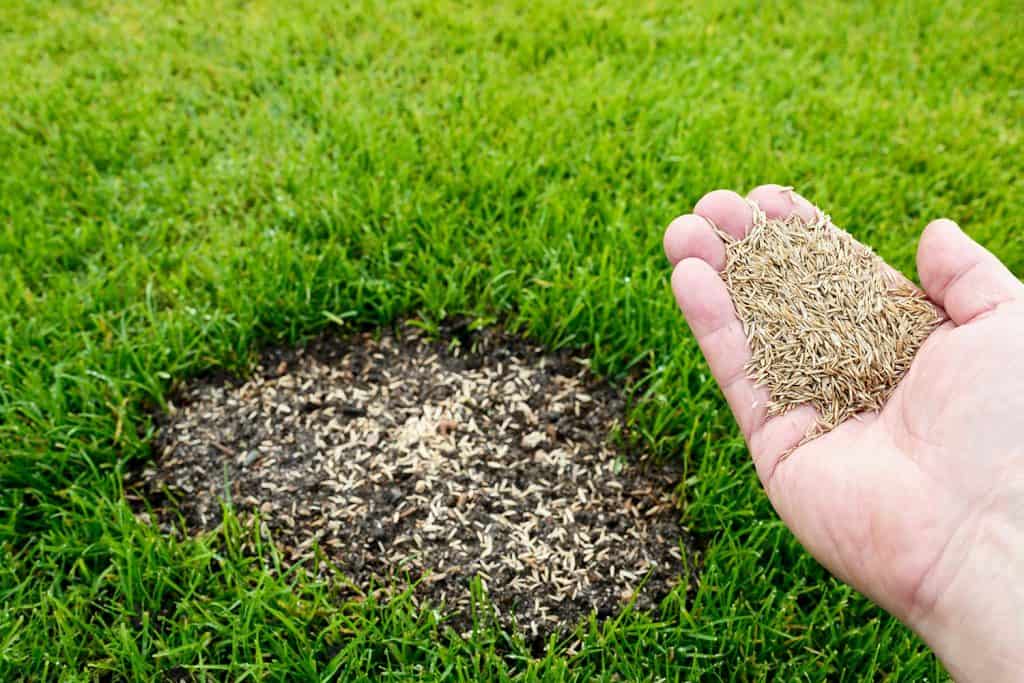
If you've identified the source of the problem, there are some grass seeds you can buy that are effective at preventing those problems in the future. Otherwise, regular grass seed will work just fine to repair those brown patches.
Scatter the seed over the loosened soil, then gently rake it to incorporate some of it into the top ¼ inch of soil. It's okay for some of the seeds to remain on the surface. Then, gently pat the grass seed to ensure that the seeds make good contact with the soil.
If dog urine is your problem, click here to check out this grass seed on Amazon.
If weeds are your problem, click here to see this grass seed on Amazon.
Fertilize, Mulch, And Water
After scattering the grass seed, it's important that you take the steps to help the seed become established. This includes fertilizing the seeds, mulching the area, and watering it thoroughly. When fertilizing, it is recommended to use a fertilizer specifically for new grass.
After fertilizing, add a layer of mulch to the patches where you scattered the seed. This will protect the new seeds and help them retain moisture and nutrients. Lastly, water thoroughly and regularly. Your new grass should be fully grown in spring.
Click here to see this new grass fertilizer on Amazon.
Will Dead Patches Of Grass Grow Back?
If the grass is truly dead, it will not grow back on its own. You will need to establish new grass seed to fix the dead patches. However, if the grass is just dormant (like in the winter months), then it should grow back in the spring.
You can tell that grass is dead if it is brown and patchy and the grass in other areas of your yard is still alive. If all the grass is brown, it is probably just dormant.
How Long Does It Take For A Brown Patch To Go Away?
If a brown patch is caused by a fungus, it could go away in a few weeks, although in some cases you may have to wait until the next growing season if the fungus is bad enough. However, other patches of dead grass not caused by fungus may not go away on their own. You may have to establish new grass to return your lawn to normal.
Can Brown Patches Be Spread By Mowers?
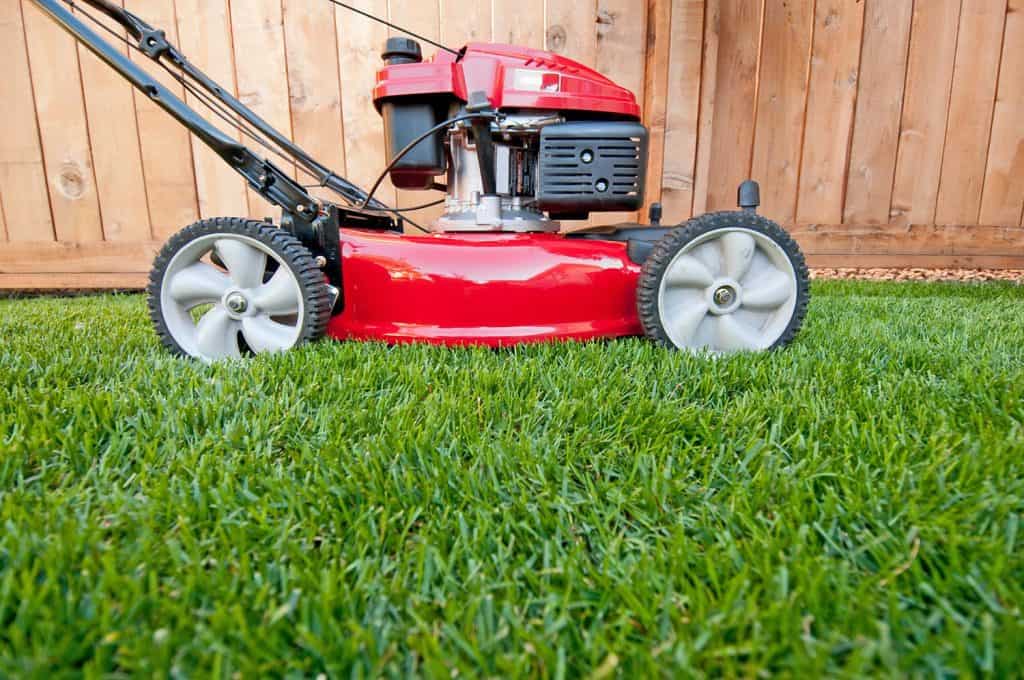
The brown patch fungus can be spread by your lawnmower or by simply walking over the grass. Wind and rain can also spread the fungus. If you suspect this is the problem, you will need to treat your lawn with a fungicide to get rid of the fungus. Other patches not caused by fungus shouldn't be spread by a mower.
Click here to see this lawn fungicide on Amazon.
In Closing
Grass can get brown patches for a variety of reasons. Luckily for you, each potential cause has a solution. By following the advice in this post, you should be back to enjoying a green lawn in no time!







You didn’t say what to do if your brown patches are caused by grubs or how to determine if that is causing the problem.
I’m having dirt patches appear in. my st. augustine grass. What could this be? I live in Austin,Texas.